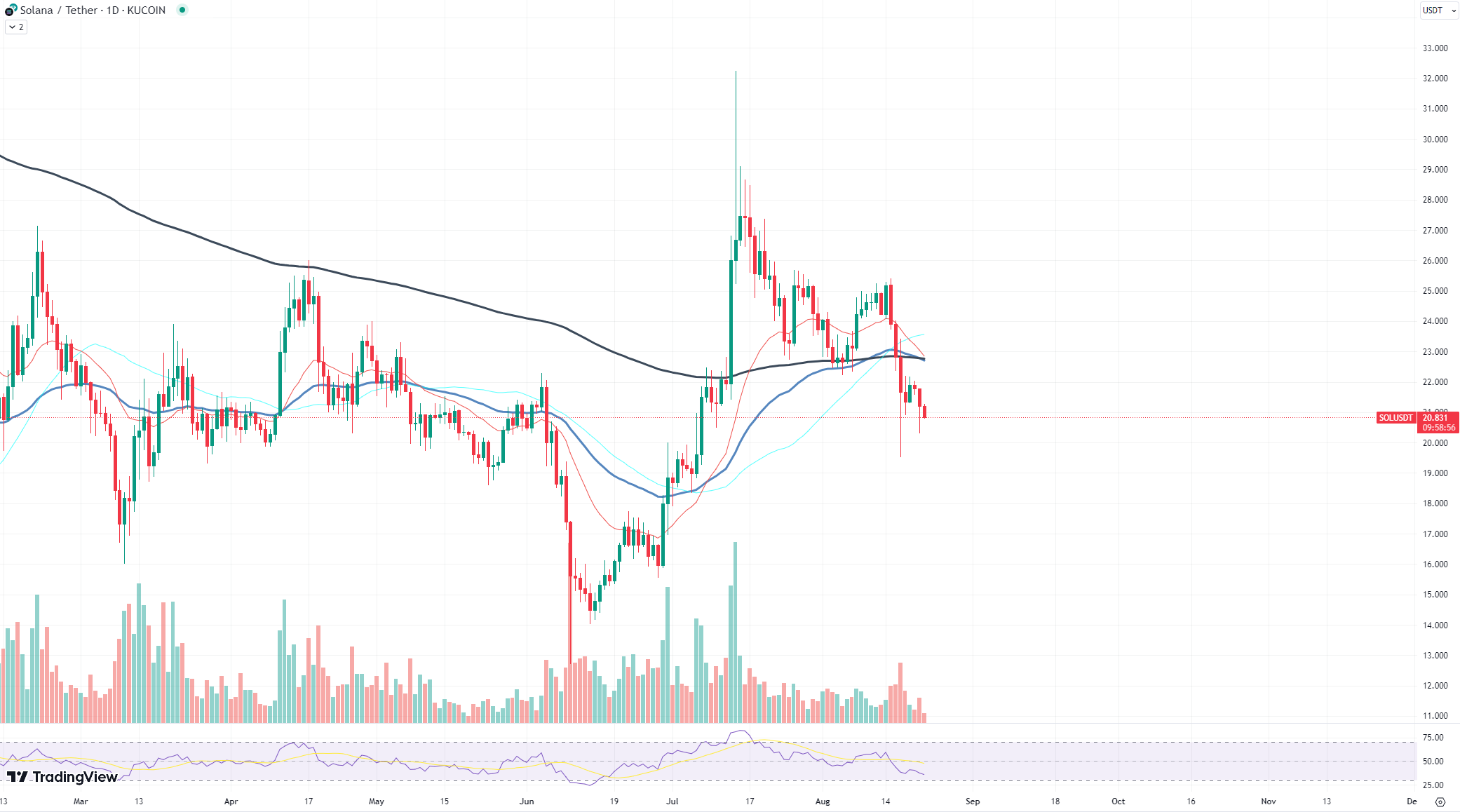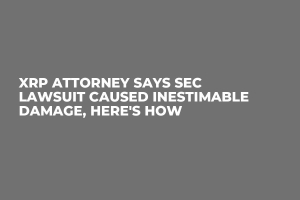
Disclaimer: The opinions expressed by our writers are their own and do not represent the views of U.Today. The financial and market information provided on U.Today is intended for informational purposes only. U.Today is not liable for any financial losses incurred while trading cryptocurrencies. Conduct your own research by contacting financial experts before making any investment decisions. We believe that all content is accurate as of the date of publication, but certain offers mentioned may no longer be available.
Solana (SOL), one of the most-talked-about blockchain platforms, is once again facing a technical indicator that has historically spelled trouble for many assets: the death cross. This pattern emerges when a short-term moving average crosses below a long-term moving average, typically indicating a potential bearish turn in the asset's price.
Recent price analysis of Solana reveals that the cryptocurrency is currently grappling with this ominous signal. The last time Solana faced a death cross was in 2022, and the aftermath was a significant downtrend. Now, with another death cross on the horizon, investors and traders are understandably concerned about the future price trajectory of SOL.

Prominent analysts, including Chris Burniske, have previously expressed their views on Solana's potential in 2023. Burniske, in particular, was optimistic, stating that he did not believe Solana would reach a new low this year, especially given the lows it experienced in 2022. However, with the emergence of another death cross, this prediction might be put to the test.
The current total value locked (TVL) in Solana stands at approximately $243.85 million. While this is a substantial amount, the looming death cross could impact investor sentiment and, in turn, TVL. If the past is any indication, a death cross could lead to a decrease in TVL as investors might seek to move their funds to perceived safer assets.
Shibarium failed some expectations
Shiba Inu (SHIB), the meme coin that took the market by the storm in 2021, is currently facing a significant test of investor sentiment and psychological resilience.
The much-anticipated launch of Shibarium was expected to be a pivotal moment for SHIB, potentially driving its price upward and solidifying its position on the market. However, the launch did not have the desired effect, leaving many investors disappointed. This lack of momentum post-launch has put enormous pressure on SHIB's current price level.
The key factor at play here is the psychological strength of SHIB investors. In the world of investments, sentiment can often drive price movements as much as, if not more than, fundamental factors. The disappointment stemming from Shibarium's launch could lead to a weakening of investor confidence. This lack of psychological fortitude among investors can result in hasty decisions, leading to sell-offs and further price drops.
Without other significant drivers or positive news on the horizon, SHIB could be at risk of stagnation in the foreseeable future. For a cryptocurrency that thrived on hype and community sentiment, maintaining investor morale is crucial. A collective belief in the token's potential can act as a buffer against market volatility and external pressures.
Cardano's RSI hints at reversal
Cardano (ADA), one of the leading third-generation blockchain platforms, has been in the spotlight for its technological advancements and community-driven projects. However, recent price analysis indicates that Cardano might be gearing up for a potential rally, and the Relative Strength Index (RSI) provides a hint.
The Relative Strength Index (RSI) is a momentum oscillator that measures the speed and change of price movements. RSI oscillates between zero and 100. Traditionally, and according to Wilder, RSI is considered overbought when above 70 and oversold when below 30. Currently, Cardano's RSI suggests that the asset is clearly in oversold territory. This could indicate that the selling pressure might be overextended, and a price reversal could be on the horizon.
Further analysis of Cardano's total value locked (TVL) reveals a value of approximately $3.776 billion. While this figure might seem substantial, it is essential to understand that TVL represents the total assets staked or locked in a blockchain's smart contracts. A higher TVL indicates more trust and utility on the network. Cardano's current TVL suggests that despite recent price fluctuations, a significant amount of assets remain staked or locked, showcasing the community's trust in the platform.
However, it is crucial to approach these indicators with caution. While the RSI suggests that Cardano is oversold and might be due for a price correction, other market factors can influence its trajectory. Broader cryptocurrency market sentiment, global economic conditions and updates or announcements related to the Cardano platform can all play a role in its price movement.

 Dan Burgin
Dan Burgin Alex Dovbnya
Alex Dovbnya Tomiwabold Olajide
Tomiwabold Olajide